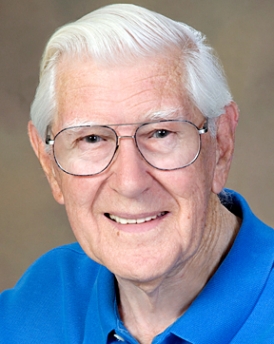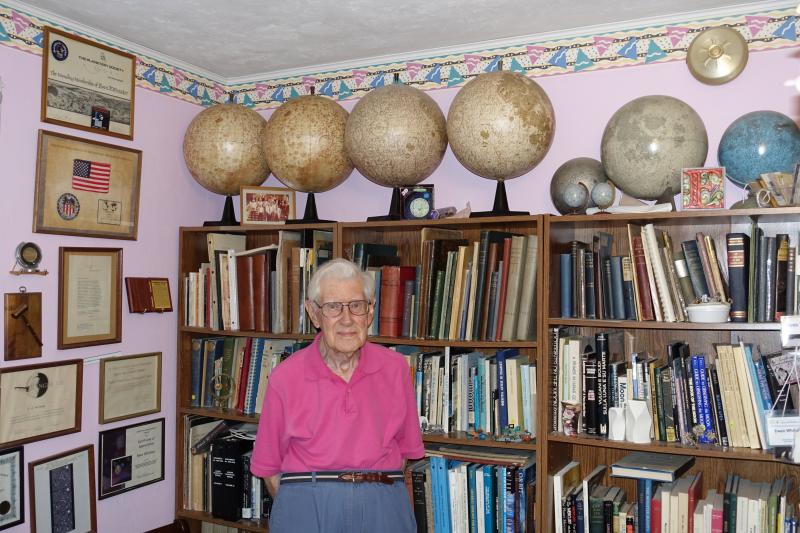OBITUARY: Ewen Adair Whitaker

Ewen Whitaker’s distinguished career straddled both sides of the amateur-professional divide in selenography. His interest in the Moon was fostered as an amateur in the post-war BAA Lunar Section under the directorship of Hugh Percy Wilkins. However, by the end of his life he had earned a reputation as one of the most significant and respected lunar scientists of the twentieth century and a key player in the preparations for the Apollo landings.
Ewen Adair Whitaker was born in London on June 22, 1922. He became interested in astronomy as a child and hoped for a career in the subject, but the War intervened and he started working for Siemens, where he did vital war work on the top-secret PLUTO pipeline project, designed to supply fuel to Allied troops in Europe. After the war, in 1949, he went to work at the Royal Observatory, Greenwich. He joined the BAA the following year.
Ewen’s work at Greenwich was concerned with stellar spectroscopy and astrometry, but he nurtured a deep personal interest in the Moon, drawing up one of the earliest and most accurate maps of the lunar south polar regions. He was a natural choice to take over from Wilkins when the latter resigned from the BAA in 1956. As Lunar Section Director, Ewen sought to promote a more ‘professional’ approach, using the best available photographs to aid accurate cartography and advocating a more focussed and systematic programme of study.

Ewen was met at Chicago airport by Kuiper on the same day that news broke of the launch of Sputnik 1. This coincidence could hardly have been more propitious, for Ewen’s subsequent work at Yerkes and Arizona was to be largely determined by the requirements of the Space Age and the developing NASA lunar programme in particular. Despite his lack of formal university qualifications, Ewen’s position in Kuiper’s team was confirmed in 1958, and in that same year he was joined by D. W. G. ‘Dai’ Arthur, another amateur refugee from the BAA Lunar Section. (Alan Lenham, also a BAA lunar and planetary observer, had already joined Kuiper in the mid-1950s.) In the years that followed Ewen was involved in the production of Kuiper’s Photographic Lunar Atlas (1960) and the creation of orthographic and rectified maps, as well as compositional maps of lava flows, made using an IR/UV imaging technique of his own devising – all in preparation for future missions to the Moon, manned and unmanned. But his interest in lunar cartography was not limited to just making the best maps possible; he was also fascinated by the history of selenography and by lunar nomenclature, for which he consistently championed a logical naming and lettering system. His book Mapping and Naming the Moon (1999) remains the standard work in the field. He personally proposed names for scores of previously unnamed craters, including 14 on the lunar far side to commemorate those astronauts lost in the Challenger and Columbia shuttle disasters.
Obviously work of that nature requires in-depth research and access to specialist literature. Ewan established his own library of the classics of selenography, including many rare atlases and maps of the Moon. During a phone call to one of the present authors (RMB), Ewen recalled the time he had visited the RGO at Herstmonceux, then in the process of moving to Cambridge. Amongst the chaos of the move, he made a startling discovery – none other than one of the one of the celebrated Moon globes produced by the eighteenth century artist John Russell. Even more astonishing inside the globe was a set of replacement gores. The find was slightly damaged and Ewen was told the globe was due to be thrown out with all the other unwanted materials. He resolved to take it back home to Tucson, where after repairing it he placed it on show among his collection of modern Moon globes. An eminently collectable item, it was later acquired by a private science museum. The scale of this rescue act was considerable: in 2007 a London art dealer offered for sale two copies of Russell’s engravings of the Moon at £12,000.
As NASA’s lunar programme advanced Ewen was involved in the Lunar Ranger project, selecting the impact sites for Rangers 6 and 7. He also contributed to the selection of the Apollo landing sites and helped to brief astronauts on Apollo missions 13, 15 and 16. Perhaps his most striking accomplishment was tracking down the exact location of Surveyor 3, which allowed the Apollo 12 astronauts to land close by and retrieve the camera from the earlier mission, for which achievement he received a letter of commendation from President Richard Nixon.
But Ewen Whitaker’s achievements were not limited to just mapping and naming the Moon. In 1973 he devised a method that helped determine the orbital eccentricity and inclination of Uranus’ satellite Miranda. In 1981 he wrote a paper in which he was able to determine the dates on which Galileo’s lunar drawings were made. In 1982 he was awarded the BAA’s Goodacre medal. In 2000 minor planet 7948 (1992HY) was named ‘Whitaker’ in his honour. And in 2011 he received an honorary doctorate from the University of Arizona, where so much of his work had been done.
Ewen retired from the Lunar and Planetary Laboratory in 1978, but he stayed on in Arizona as a research scientist emeritus, acting as both mentor and inspiration for new generations of lunar scientists. He also continued to be a great friend of the BAA, remaining a member until his death and corresponding regularly by letter and telephone with his friends in the Association, including the authors of this obituary. In his spare time he took great delight in collecting and restoring antique clocks.
Ewen was the most charming of men who carried the weight of his achievements with great humility. Alert and active right to the end, his long life was a model of how – with a willingness to take risks and put in huge efforts – humble amateur origins can lead to great professional success.
Ewen Whitaker died on October 11, 2016, at the age of 94. His wife Beryl predeceased him in 2013.
| The British Astronomical Association supports amateur astronomers around the UK and the rest of the world. Find out more about the BAA or join us. |
